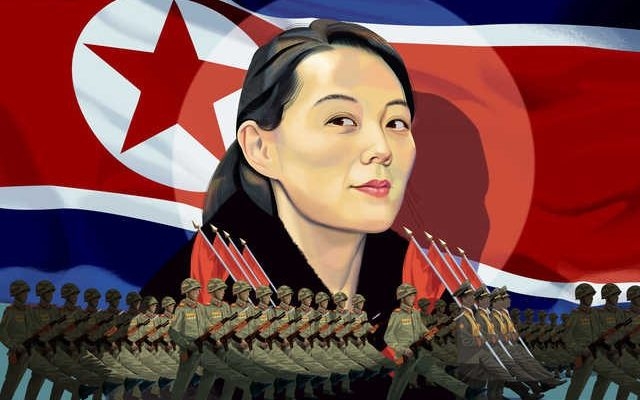 'North Korea's first sister holds true power' writes Sung-Yun Lee. Photo: Nigel Buchanan.
'North Korea's first sister holds true power' writes Sung-Yun Lee. Photo: Nigel Buchanan.
Under foggy February skies, the plane descended towards Incheon International Airport in South Korea. There were 23 passengers in the cabin — five officials, three reporters and the rest of the bodyguards. But there is only one thing that matters.
At 13:46 KST on February 9, 2018, a Soviet Il-62 aircraft landed. This was the first time a direct descendant of the dynastic founder of North Korea, Kim Il Sung, set foot on South Korean soil since Kim Il Sung himself in July 1950, a month after the invasion of the South.
The cameras tried to film the guests. The first to leave the airport was Kim Yong-nam, then the 90-year-old figurehead of the North Korean mission, who got into the first of two black sedans. Then, accompanied by a tall male bodyguard from North Korea and a female bodyguard from South Korea, a thin woman in her 30s approached. As she walked to the second car, her gaze was fixed and her posture was straight, as if she was completely uneasy from the fact that she was in the center of such a historical moment.
It was Kim Yo-jong, the sister of leader Kim Jong-un. As the youngest of the late leader Kim Jong Il's seven children, she adored her from childhood, and her parents called her «sweet princess Yo Jeong.» But unlike her other brother Kim Jong-chul, a royal brother with no real power, Kim Yo-jong was also ambitious.
Since at least 2014, she has been the «chief censor», running the National Propaganda and Agitation Department (PAD), whose task is to indoctrinate North Koreans with state ideology. Her role in government has skyrocketed since 2018, and she has played an integral role in the running of the state, expanding the power of her dynasty, building on the lessons she learned from her father, and earning the nicknames «bloodthirsty demon» and «devil woman» along the way. some North Korean officials.
And yet, before that trip to South Korea, few people outside her country had even heard of her.
During the two days that the mysterious princess from Pyongyang attended dinners, receptions, and the opening ceremony of the Pyeongchang Winter Olympics, she delighted the South Koreans despite doing almost nothing but walking, sitting, shaking hands, ignoring Vice -U.S. President Mike Pence to the Olympic stands, smiling infrequently and often looking down on South Koreans, including President Moon Jae-in. Yo Jung watches the opening ceremony of the 2018 Winter Olympics in Pyeongchang, South Korea with North Korea's figurehead head of state Kim Yong-nam and behind Mike Pence. Photo: AP
She did not give a single public statement or interview. The only moment that gave away that she was really thinking about anything happened during the opening ceremony. When the American athletes arrived, she remained in her seat while the others cheered with their noses up and a slight frown. (By that time, US-North Korean relations were in a particularly bad state, and Kim Jong-un often called names to then-President Trump, that «mentally deranged American moron».)
Kim Yo Jung also avoided small talk at photo shoots and sat silently, her face expressionless, while the others politely chatted about the weather. Nevertheless, throughout this 56-hour trip, she was talked about not only in the country, but also abroad.
The press comments were over the top, revealing every detail from her simple black outfit and the flower-shaped bobby pin that styled her hair back in a «serious style» to the fact that she was seen wearing heavy makeup even though she usually wore little of it at all. . What does this mean? One expert concluded that her eye shadow should be positive news — a sign that she is serious about her mission.
“She is not only pretty, but also polite!” exclaimed another commentator after an argument over seats in the airport's VIP lounge. In their excitement, they were unable to see what was really going on: the South Korean hosts indicated Kim Yong Nam to take the center seat, but he gestured for the princess to take him instead. With a smile, she motioned for him to sit down. «How cute she is!» noted the South Korean pundits, failing to notice that Kim Yo-jong's outstretched fingers were not so much a gesture of respect as a boss who ordered his subordinate to sit down.
 Kim Yo-jung arrives for the opening ceremony of the 2018 Winter Olympics in Pyeongchang, South Korea. Photo: AFP
Kim Yo-jung arrives for the opening ceremony of the 2018 Winter Olympics in Pyeongchang, South Korea. Photo: AFP
If she wanted to show true respect, Kim Yo Jung would have waved both hands. But impenetrability and self-confidence, brought up from an early age, do not lend themselves to modesty; here she quietly exuded arrogance.
The most important event of her trip was a visit to President Moon at the Blue House, then the presidential office and the mansion, followed by dinner. It was here that she delivered a personal letter from her brother, paving the way for a series of historic meetings between the leaders of North and South Korea.
That this letter was delivered by Kim Yo-jong and not by Kim Yong-nam, a 60-year government veteran who has been chairman of the Presidium of the Supreme People's Assembly, the rubber-stamped parliament, for the past 20 years, speaks volumes. . It was a snapshot of a peculiarity of North Korean political culture, in which official ranks often conflict with true hierarchies, and the lives of cabinet members and four-star generals can depend on the whims of a much lower real holder of power. . Indeed, Kim Yo-jong could, if she wanted to, order the execution of any of the 250 members of the Central Committee of the Workers' Party of Korea, except for Kim Jong-un.
This is the First Sister. North Korea, which wields real power.
When Kim Il Sung died in 1994 and Kim Jong Il became Supreme Leader, the outside world—even foreign intelligence agencies—knew little about the new man or his seven children born to four different women. Of his three youngest children, Jung Chul, Chen Eun, and Yeo Jung, all born of his most beloved wife, dancer Ko Yong Hui, they knew nothing at all.
0606 Kim Jong Il's Seven Children
Kim Jong Il first taught his children at home and then sent them to study abroad in Geneva, Bern and Moscow. This was also done to protect his own interests: to minimize the spread of rumors among would-be classmates about his lavish lifestyle and excesses, such as his penchant for the best food and wine that money can buy, or falling victim to «reactionary thoughts» while watching James Bond. films and South Korean soap operas, even as he punished others found guilty of such criminal acts.
Some of the most poignant details about family life behind closed doors come from Japanese sushi chef Kim Jong Il with a 13-year-old experience. . Kenji Fujimoto (pseudonym) worked for him from 1988 to 2001 and had direct personal access to the leader and his three youngest children. But he never saw the other four children of Kim Jong Il — then the leader forbade his children from different mothers to meet each other.
Kim Jong Il invited Fujimoto to banquets and nightly drinking parties. He played games with the royal family, taught boys how to fly kites, and when Kim Jong-un was a teenager, he was his secret smoking buddy.
According to Fujimoto, Yeo-jong's parents addressed their daughter as «princess» — and since childhood, she has been the backbone of the royal family. While eating, she sat to the left of her father, and her mother to his right.
Fujimoto portrays her as a strong-willed girl. Still not quite «iron will», but resolute and stubborn. Her father placed Kim Jong-nyo, a singer in his favorite band, on his estate to serve as the little princess's playmate—she even accompanied the family on trips abroad—but one day, Fujimoto discovered that she had left. Princess Yo Jeong, then about eight or nine, fired her.
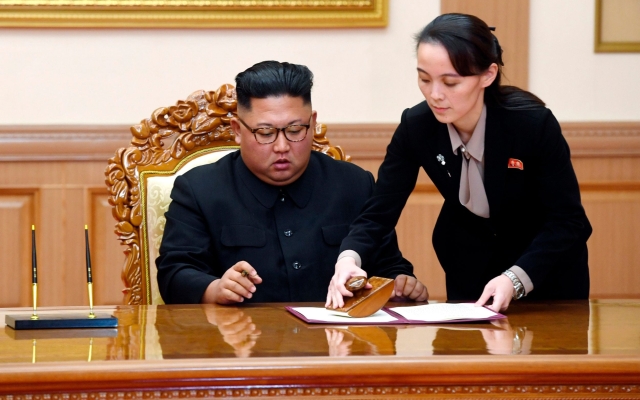 Helping Kim Jong-un sign a joint statement after a summit with then South Korean President Moon Jae-in, September 2018. Photo: Pyongyang Press Corps Pool
Helping Kim Jong-un sign a joint statement after a summit with then South Korean President Moon Jae-in, September 2018. Photo: Pyongyang Press Corps Pool
The princess was also seen scolding Jung-chul after he fell in love with one of her attendants. One day, when he was about 16, he snuck into the women's theater on one of his father's estates, where Yeo Jung was watching a movie, to sneak a peek at an assistant, but Yeo Jung physically pulled him out even though he was seven years older and, apparently much larger. (She never had to repeat the same thing to her middle brother—Kim Jong-un was more into sports and video games than the girls.)
When Ko Yong Hui died in 2004, probably from breast cancer, her daughter was only 16 years old. But she was already being prepared for the future.
Together with her two brothers, she received special training in how to behave like a king. The photo, taken in 2009, shows the three siblings accompanying their father to Wonsan Agricultural University, a glimpse of their apprenticeship.
She soon supported her father at important meetings, and when former US President Bill Clinton made a short trip to Pyongyang in August, Kim Yo-jong, who was not even 22 years old, was waiting for her on the runway.
The meeting gave a telling indication of her leadership style: ignoring the former president and not introducing herself, she went straight to Clinton aide Doug Band and—in English—asked if he had the document she was expecting (a thank-you note from President Obama promised her father in exchange for the release of two American hostages). There was no cordiality; she was busy.
Kim Jong Il's death from a heart attack in December 2011 brought attention to his youngest son, who has not yet turned 20, as the new Supreme Leader, but from the very beginning his sister is near with him, often accompanying him on official visits to military bases, factories, museums, farms, orphanages, and a nuclear missile assembly plant.
For Kim Jong-un, only he, his sister, and his brother belonged to the main stem of the Mt. Paektu family tree. Their older half-siblings, in his opinion, lived outside the direct line of descendants. And of the three main siblings, Kim Jong-chul seems content to live in the shadows, while Yeo-jong, who is capable and reliable, is a completely different type.
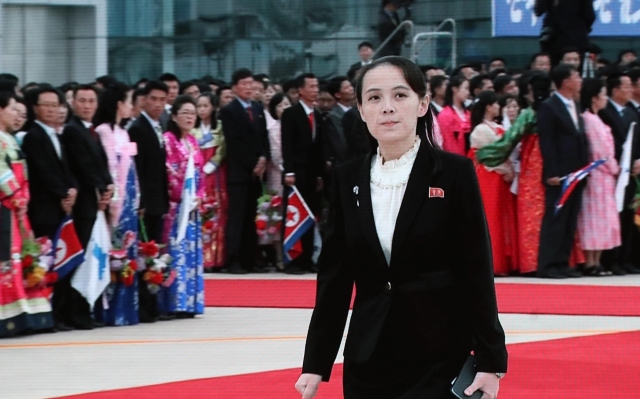 At the 2018 inter-Korean summit in Pyongyang, Kim Yo-jong waits at Pyongyang International Airport for the arrival of South Korean President Moon Jae-in. Photo: Newscom/Alamy
At the 2018 inter-Korean summit in Pyongyang, Kim Yo-jong waits at Pyongyang International Airport for the arrival of South Korean President Moon Jae-in. Photo: Newscom/Alamy
The closest she came to a public performance was in November 2012, less than a year into Kim Jong-un's rule, when 25-year-old Kim Yo-jong was shown riding a white horse with her paternal aunt Kim Kyung-hee, who was in charge of the light industry department. party for over two decades. Each of their horses was adorned with a five-pointed silver star on its head, the emblem of the Kim dynasty and the nation it rules. The assumption was clear: Kim Yo-jong's official role was to expand.
Another indication of her importance came in October 2019, when she and Kim Jong-un were photographed, again on horseback, on horseback. Mount Paektu together. Plans to significantly increase Kim Yo-jong's official role in the government were already in place.
At the suggestion of her uncle, Kim Yo-jong also joined a class of 50 that was specially created for her at the Department of Politics and Economics at Kim Il Sung University, where her classmates were undergraduates and doctoral students. The crash course lasted six months. It was intended to brush up on her knowledge, but it was also a way for her to get to know her future husband. Other students noticed that she was very good with computers. She easily used two monitors at the same time, typing deftly. Whether the matchmaking worked or not is a state secret, but there is speculation that she got married and had two children.
By at least the end of 2014, Kim Yo-jung was heading PAD while working under the pseudonym «Kim Yo-jong»; her father also ran the department when groomed for office. To many, she was still Kim Jong-un's usual, happy-go-lucky sister — she was spotted joking at the opening of an amusement park and attending music concerts with her brother and sister-in-law — but behind the scenes, she seems to have got to work.
In 2014, a wave of obscene language suddenly and unusually erupted from the North Korean propaganda media, and articles full of profanity, aggressive racism, sexism and homophobia in the state media.The Korean Central News Agency (KCNA) called Michael Kirby, a gay former justice of the Supreme Court of Australia, «a disgusting old lecher with a 40-year career as a homosexual.» His «crime» was that he chaired the United Nations Commission of Inquiry into Human Rights Violations in North Korea, whose monumental 372-page report, published in February 2014, showed that extreme human rights violations are the work of the state.
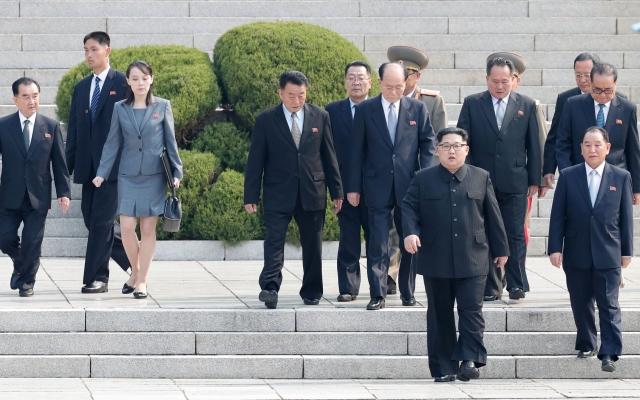 Kim Yo-jong (3rd from left) walks with Kim Jong-un (2nd from right) to the military demarcation line in 2018 Credit: AFP
Kim Yo-jong (3rd from left) walks with Kim Jong-un (2nd from right) to the military demarcation line in 2018 Credit: AFP
At the same time, the KCNA targeted South Korea's first female elected leader, President Park Geun-hye, calling her a «evil sycophant» and a «dirty old whore.» Referring to President Park's warm welcome to President Obama in South Korea, propagandists said that Park reminded them of «a naughty whore who asks her lover to harm another person by having sex with him.»
Shortly after, state media called President Obama himself an «evil black monkey» who should «live with a group of monkeys in the world's largest African natural zoo and lick breadcrumbs thrown by spectators.»
Such an invective could never be published without the approval of the Supreme Leader and his chief propagandist, Kim Yo-jong, who could have coined some of these words, or at least signed them.
She rose through the ranks, taking on increasingly powerful roles, including de facto head of the Organizational Leadership Department, the country's central center of political power, overseeing the day-to-day decisions of key personnel matters, including in the armed forces. Political surveillance, punishment and praise suddenly became her prerogative. Theoretically, she could decide who to control, demote, promote, punish, exile, or even tie up for execution in the town square or sports stadium behind closed doors. «. Leader».
Later, Kim Jong-un pushed her even higher. In 2021, he appointed his sister to the State Affairs Commission, the highest governing body. And in January 2023, at the age of 35, she assumed the key role of keynote speaker on Russia's war with Ukraine and the resumption of Cold War dynamics. Warning the US that any tanks supplied to Ukraine to defend against Russia would be «burned to pieces in the face of the indomitable fighting spirit and might of the heroic Russian army and people,» she added that her people would always «stand in the same trench.» 39; with Russia.
Like her brother, Kim Yo Jung has been underestimated in the past. Solely because he went to school in Switzerland, many initially viewed Kim Jong-un as a potential reformer. Similar fantasies swirled around the sister, and 2018 was a big year after the glamor and gossip she brought to South Korea.
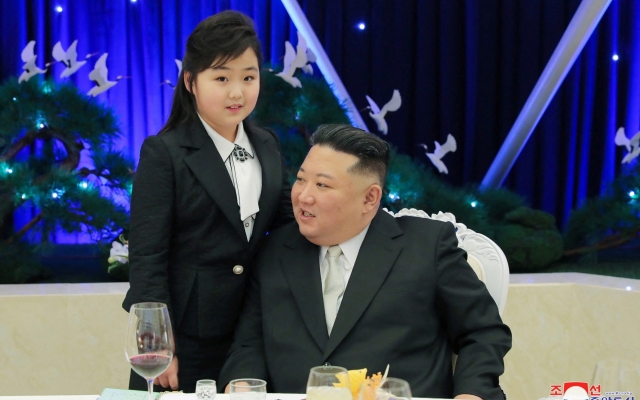 Kim Jong Un talks with his daughter Kim Joo Ae at the 75th Anniversary Banquet of the Korean People & Army #39 in Pyongyang Photo: KCNA
Kim Jong Un talks with his daughter Kim Joo Ae at the 75th Anniversary Banquet of the Korean People & Army #39 in Pyongyang Photo: KCNA
But that view has since changed in some circles. Rumor has it that at home she is not limited to simple threats to life. She reportedly ordered the execution of several high-ranking government officials simply for «getting on her nerves». She is said to have sent less obnoxious people and their families to detention camps and Gulags for forced labor, beatings, torture and starvation rations.
It is said that ordinary North Koreans call her «Empress Dowager Cixi, after the ruthless de facto ruler of China's last imperial dynasty, in power for almost 50 years.
The position held by Kim Yo-jong is not the head of state, but she is the only a person surrounded by Kim Jong-un, who enjoys his full confidence and can approach him at any time without a call. When it comes to public administration, no one else has such easy access to the Supreme Leader. And under him, her power only grew.
The pandemic has accelerated it, no doubt increasing the pressure to develop a succession plan should he become incapacitated. After all, he is not in optimal health and suffers from heart disease, diabetes and obesity like his father and grandfather.
Kim Yo-jung seems like a natural choice even in a male-dominated society: her older brother Jung-chul is no longer considered the heir apparent; her half-brother Jeon Nam, the eldest son, died in February 2017 at the age of 45 in a nerve agent attack at Kuala Lumpur International Airport. Although he was once a leader, by then he had become an outspoken critic living in exile. As for the three older half-sisters, none of them held any important government positions or received public recognition.
It is reported that Kim Jong-un himself has three small children. In November 2022, he publicly revealed one of them for the first time — daughter Joo-ae, who is about 10 years old — during the launch of a powerful intercontinental ballistic missile. Some observers of North Korea predicted that she would be chosen as his successor. But even if this is true, it will be some time before she is old enough like Aunt Yo Jung to make official statements on her behalf or lead a delegation.
Kim Yo Jung is by far the best prepared to become a torchbearer. For the past three years, she has remained her country's chief censor, spokeswoman, mocker and distributor of threats and malice, with the country's foreign policy in her hands and unlimited access to her brother in control of the nuclear button.
As growing in power and spreading rumors of her ruthlessness, it would be dangerous to overestimate the benevolence of Princess Paektu Mountain. At her brother's wish, she will wield this unique power for decades as his second-in-command, or perhaps one day as the first female Supreme Leader in her country's history.
An abridged excerpt from Sister: Outstanding . The story of Kim Yo-jung, the most powerful woman in North Korea, by Song Yoon-lee, out June 15 (Pan Macmillan, £20). To order from Telegraph Books for £20 call 0844 871 1515 or visit books.telegraph.co.uk
Lee Sung-yoon is the Kim Koo-Korea Foundation Professor of Korean Studies at Tufts University. Previously, he was a fellow at the Korea Institute at Harvard University.





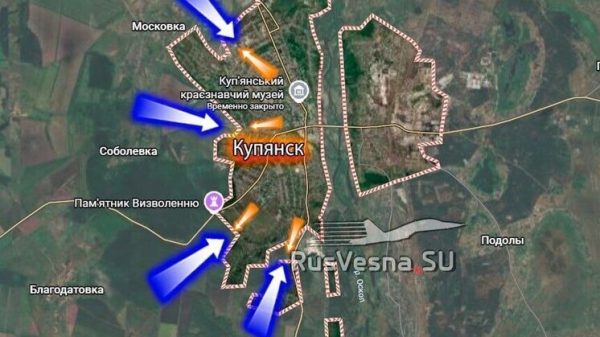


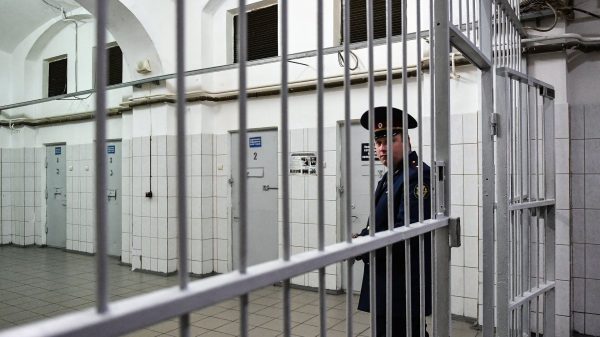




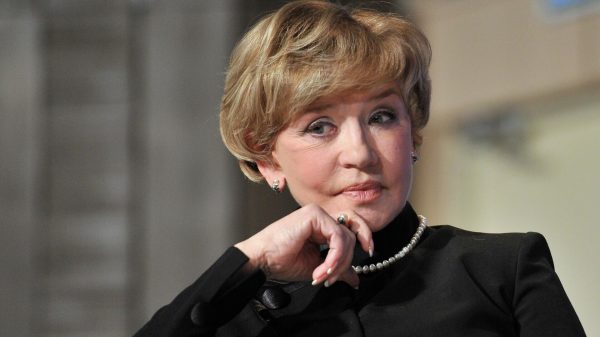
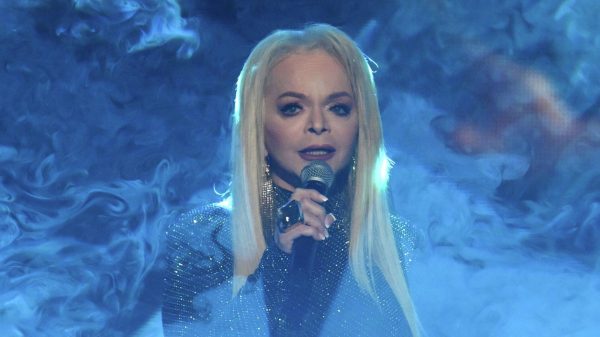


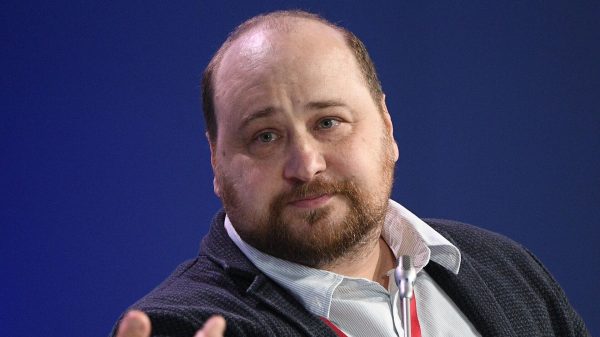



































Свежие комментарии